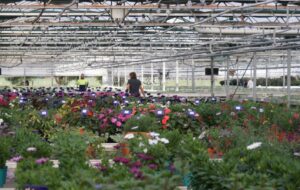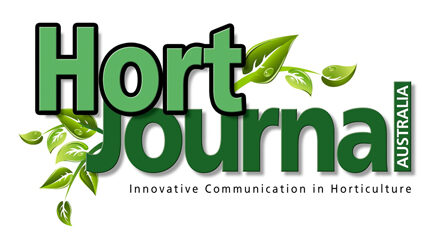
AI and the future of work
By John Fitzsimmons
Almost every time you commence work these days you will engage with AI, an increasingly familiar acronym for artificial intelligence. Some are hopeful that this powerful technology will improve their working lives, whilst others are concerned about the future of their jobs. What impact might AI have on the horticultural industry and in which places?
Firstly, I am not a ‘geek’ and I am definitely not a ‘digital native’. I received some training on an early digital publishing mainframe system that consisted mainly of rote keystrokes with little understanding of what was going on ‘under the floorboards’, but, like many, I eventually used desktops and laptops every day learning by osmosis.
Fast forward two or three decades and we now have amazing computing power, and appropriate storage capacity, and can carry a big chunk of it around in our pockets! However, this computing power is a bit like the atomic bomb. When that technology was ‘successfully’ proved, one of its creators reportedly exclaimed wondrously ‘It works!’ It was only later that people started to question the downsides and consequences of its malignant use.
The limits of understanding the full consequences of AI are now only starting to be recognised. Questions about how we use, control, regulate and direct this new tool are being raised. There is fear of AI’s outcomes and of professional obsolescence. And there is excitement. Uptake has been described as uneven.
AI has promised to revolutionise commerce and industry – from technology to education, healthcare and professional services. Many individuals, companies and governments are in a race to get on the bandwagon and secure a profitable and/or powerful place in the vanguard of AI’s many touted advantages. Vast amounts of money have been invested; yet the real returns so far (beyond commercial speculation) are not clear.
From supercomputers to robots, we are processing information faster than ever. One estimate suggests that expanding AI in Australia’s finance sector alone could add $60 billion to the national economy over the next 10 years. IBM Consulting’s David Ellis expects it to infiltrate almost every part of the economy, especially sectors using ‘knowledge workers’, e.g. accountants, lawyers, and consultants. Ellis argues that these workers who rely on experience and pattern recognition will become even more adept at doing so with the help of AI. Diagnostics, medical services and tailored learning are other sectors expected to be affected as AI continues to be adopted.

To fully benefit from AI requires big investments with some observers saying Australia needs to catch up with other nations across the globe. University of New South Wales Science Professor Toby Walsh has said: ‘We are somewhat lagging behind. We are not seeing the investments we are seeing in other countries. We are not seeing the government making the sorts of commitments we are seeing in other countries. The spoils are being captured by a few, mostly North American, companies and that wealth is not being distributed equally.’
In a recent interview, University of Toronto Professor Emeritus Geoffrey Hinton, the so-called Godfather of AI, forecast that in five to 20 years we will have machines much smarter than us. Professor Hinton has expressed concerns about deliberate misuse by malicious actors, technological unemployment and existential risk from artificial general intelligence. He believes that establishing safety guidelines will require cooperation among those competing in the use of AI to avoid the worst outcomes. After receiving the Nobel Prize in Physics he called for urgent research into AI safety to figure out how to control AI systems smarter than humans.
Regarding machines learning from themselves (‘super intelligence’) becoming a reality, Professor Hinton observed that many leading experts differ on when they think it will happen but most of them believe it will happen, the consensus being that between 5 and 20 years from now we will have AI much smarter than us. Some in the field think sooner, others later, and yet others think it will never happen.
Can AI on its own can truly innovate? And will it be a ‘jobs killer’ or a ‘jobs changer’? Professor Hinton believes that very much depends on the type of job. In some types of jobs there is very elastic demand, he explained, such as in healthcare. If we made doctors and nurses 10 times more efficient, we could have 10 times more healthcare, he posed. But in places like call centres, much of their work will be done more efficiently by AI very soon. Professor Hinton has claimed that more or less all mundane intellectual labour is not safe from AI. The Age columnist Tim Duggan agrees, writing that ‘No amount of higher education makes you immune from these trends’.
So, what does that mean for today’s students and those starting their working lives, especially in horticulture? Professor Hinton says, ‘It used to be that you could train in something, some specific skill that would then give you a good job for life. I don’t think it’s going to be like that anymore. Very few specific skills are going to be safe for 10 or 20 years. So my best advice is to try and get an education that teaches you to think – makes you able to “learn to learn” and be adaptable.’
Perhaps we could consider AI’s potential impacts on horticulture and its workforce in the following areas:
Genetics and plant breeding: This is above the pay grade of most Hort Journal readers (and your writer), but it is surely already being used by the world’s principal plant breeders. The immediate benefits for them are obviously faster and more focused processing of data. The outcomes should be faster identification of the genetics underlying desired plant traits, leading to faster development of new desired lines, and probably increased diversity and choice. Global crops (e.g. tomatoes, wheat, rice) and big world ornamentals (e.g. roses, geraniums) will see advances first.
Production: For larger production nurseries there is undoubted potential for AI to improve efficiencies in production planning and internal logistics, and matching inputs (e.g. nutrients, water, energy) to production volumes and types. For almost any plant production site, AI is already available to optimise growing conditions especially in protected cropping situations. Hort Journal has already reported on the arrival of new AI supported imaging and diagnostic technologies relating to plant health (pests and diseases), nutrition and light management.
Business administration: While many of us love our industry and our plants we must never neglect the business basics – money in, money out, profitability, growth and/or diversification, funding and return on investment. Because this is common to any commercial enterprise, AI assistance is already available and being applied to these areas in most businesses including horticulture. AI advances are readily supported by vast datasets and universal customer bases.
Sales and marketing: This is really a subset of the above, so, to repeat, AI assistance is already available and being applied to these areas, notably client relationship programs and communication available to most businesses, including horticulture.
Logistics: Again, this is really another subset of general administration, but with big distances and dispersed customers, especially in Australia, the cost of logistics can be high, and any efficiency gains can be significant in terms of dollars and profitability, especially with perishables such as greenlife and fresh food.
Labour: In the short term, it looks like AI’s biggest impacts will be in technical and enterprise management areas. Manual labour looks ‘safe’ for the moment – at least until AI leads to reductions in overall enterprise labour requirements, and when AI generated efficiencies free up capital for more investment in automation.
Training: As Professor Hinton comments, ‘learning to learn’ is key. If you are starting out, then you must start somewhere relevant to where you want to end up. However, as Hort Journal and others have often reported, future jobs in horticulture will often have little to do with plants and much to do with directly unrelated fields and skills including commerce, computing (including AI), specialist scientific fields of understanding and more. This is an extremely fluid area, and many parts of our industry’s education and training sector are struggling to adapt at pace.
Obviously, the potential applications for AI are still emerging but there remain challenges to be overcome and some real-world difficulties to be considered. So, a broad summation of the current AI situation from one non-expert’s viewpoint is that AI is happening and the path forward is not direct or smooth. Everyone will be affected but in different ways, however the future rests with those who ‘learn to think’ and adapt, especially in the horticultural industry.
Note: Professor Emeritus Geoffrey Hinton was interviewed on ABC TV’s The Business (23 September 2025).
